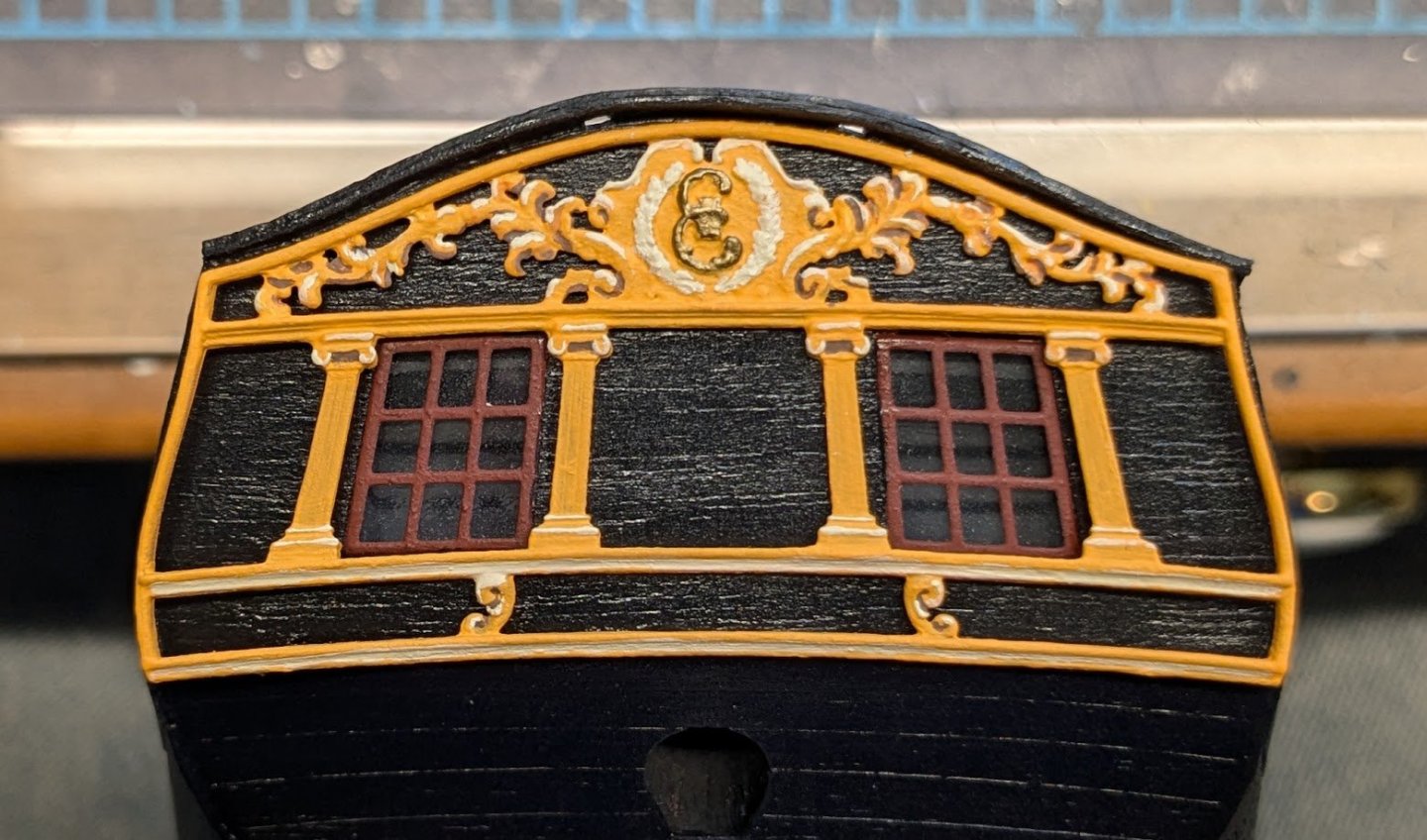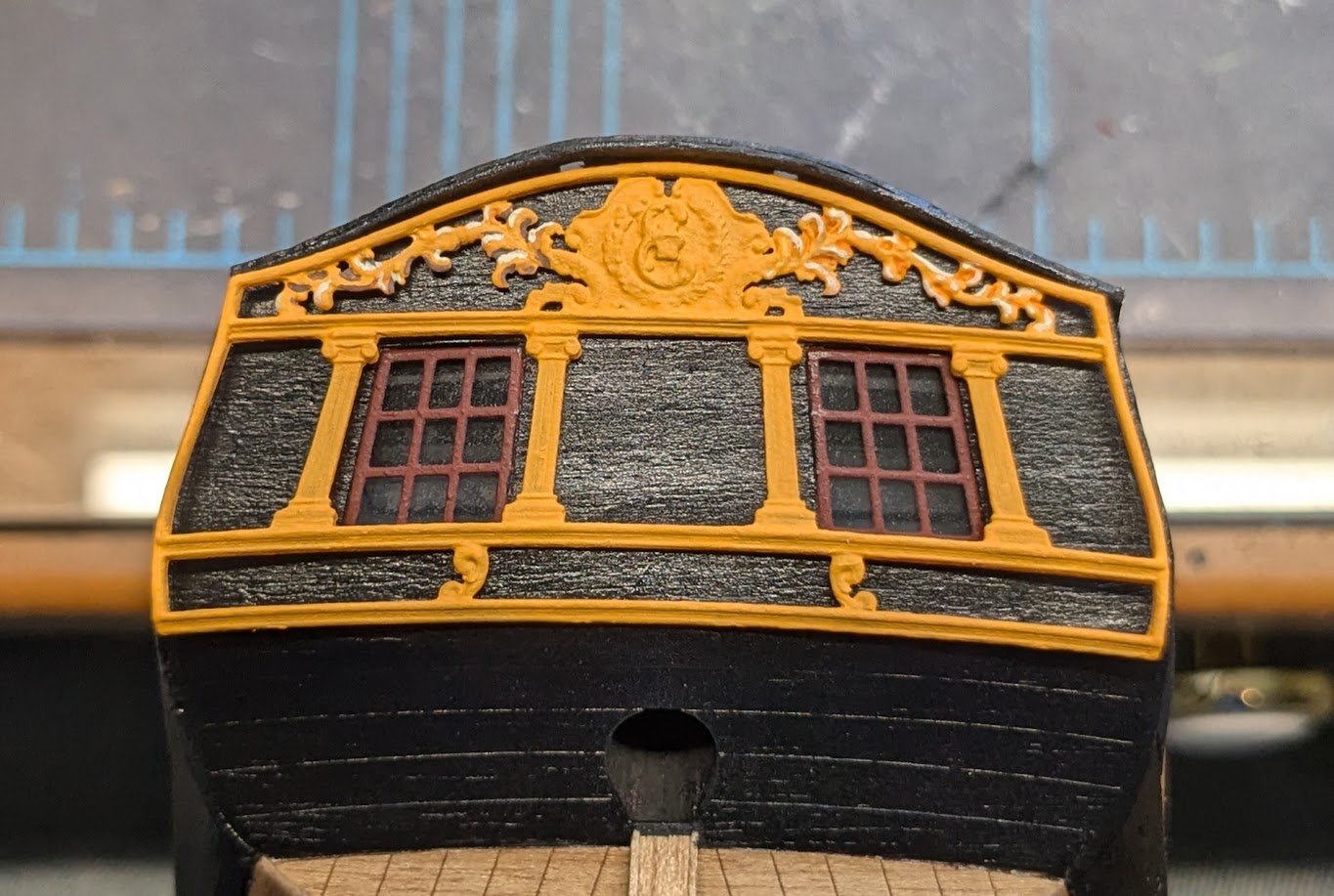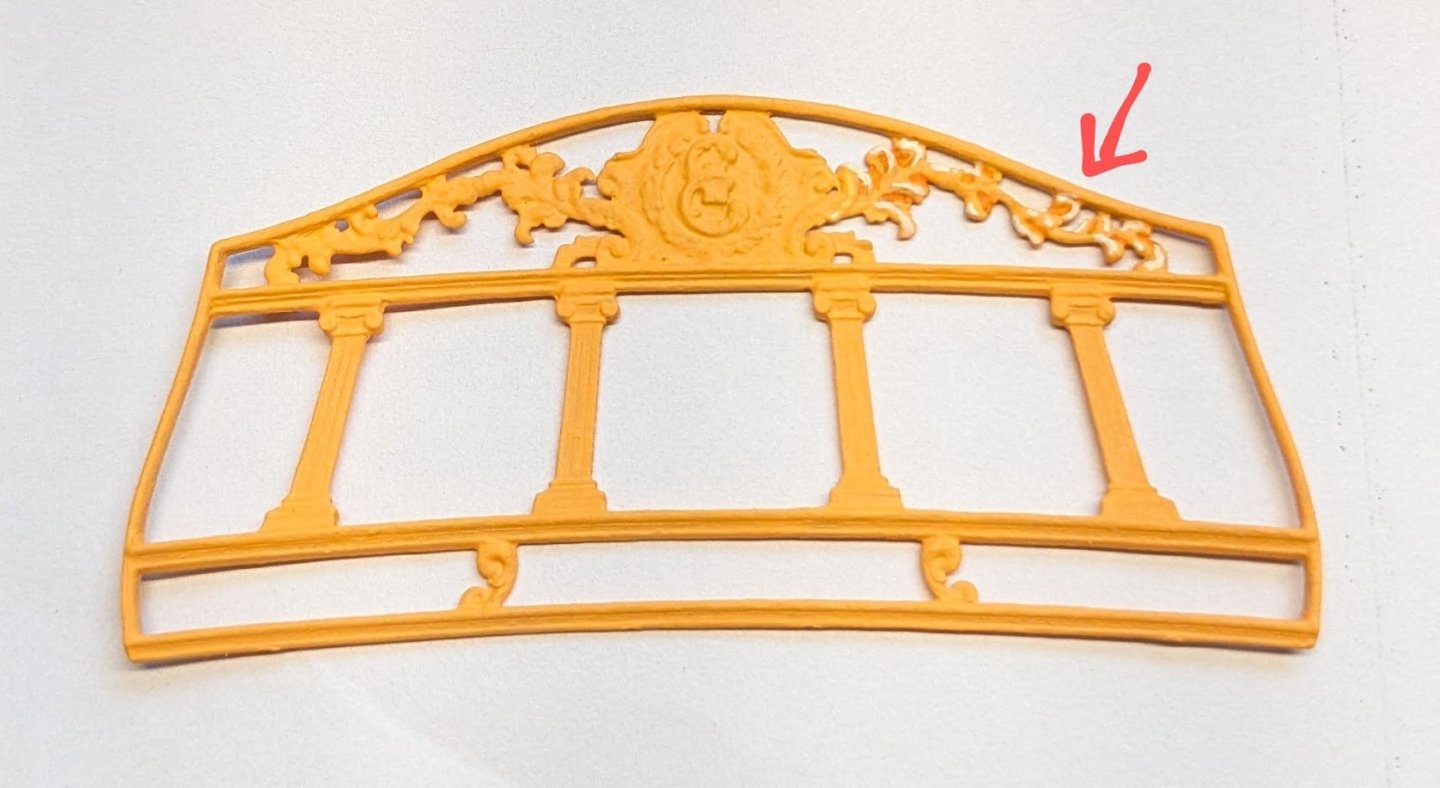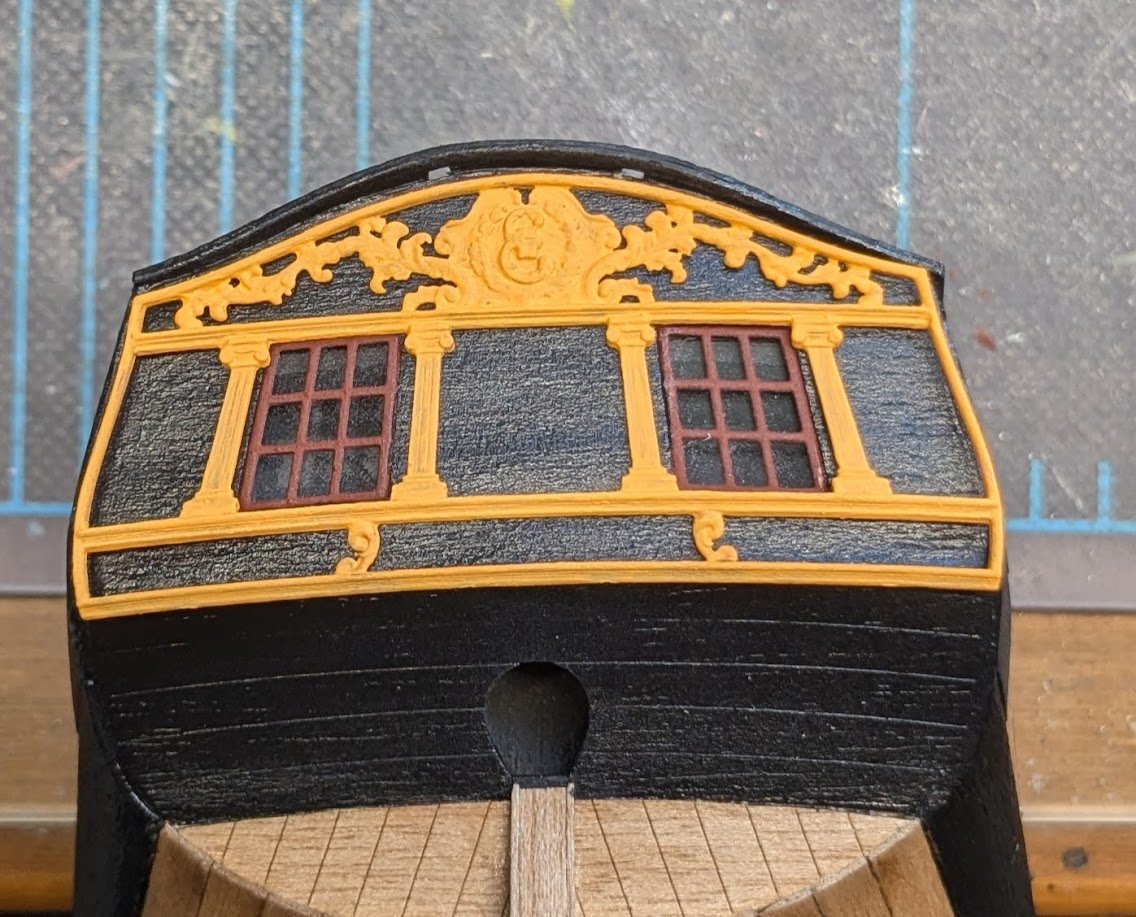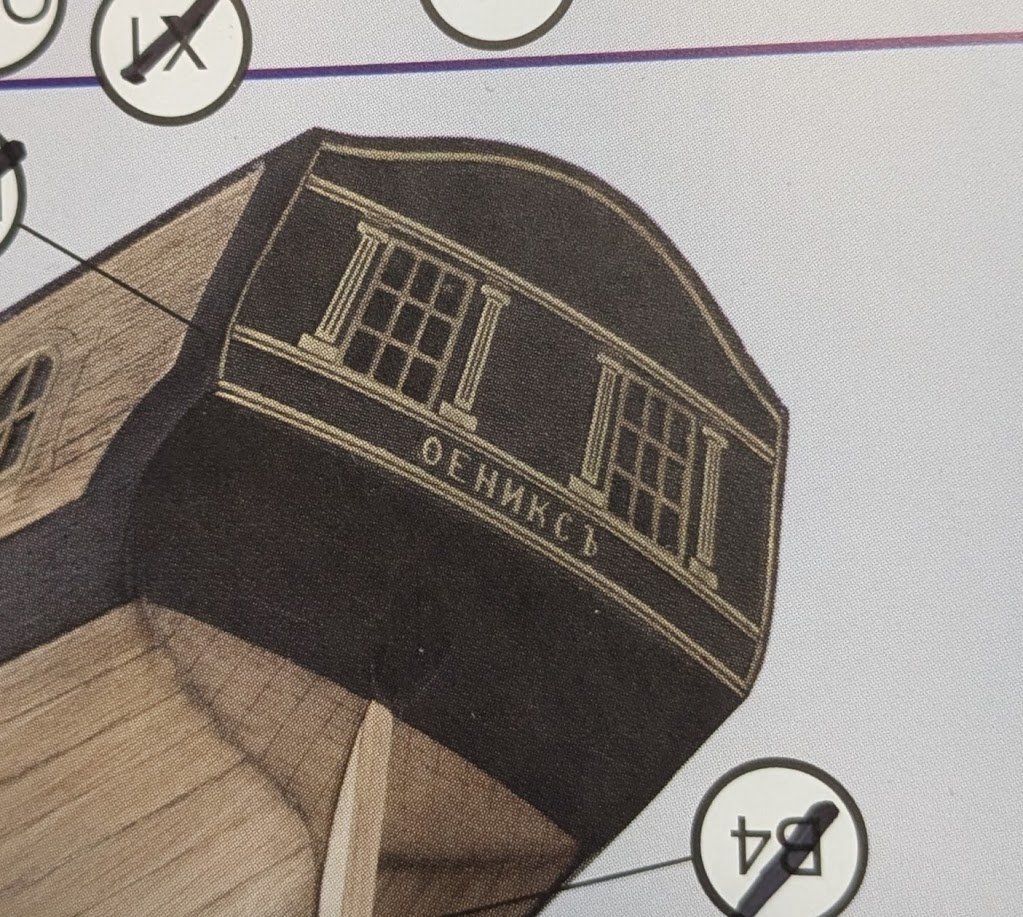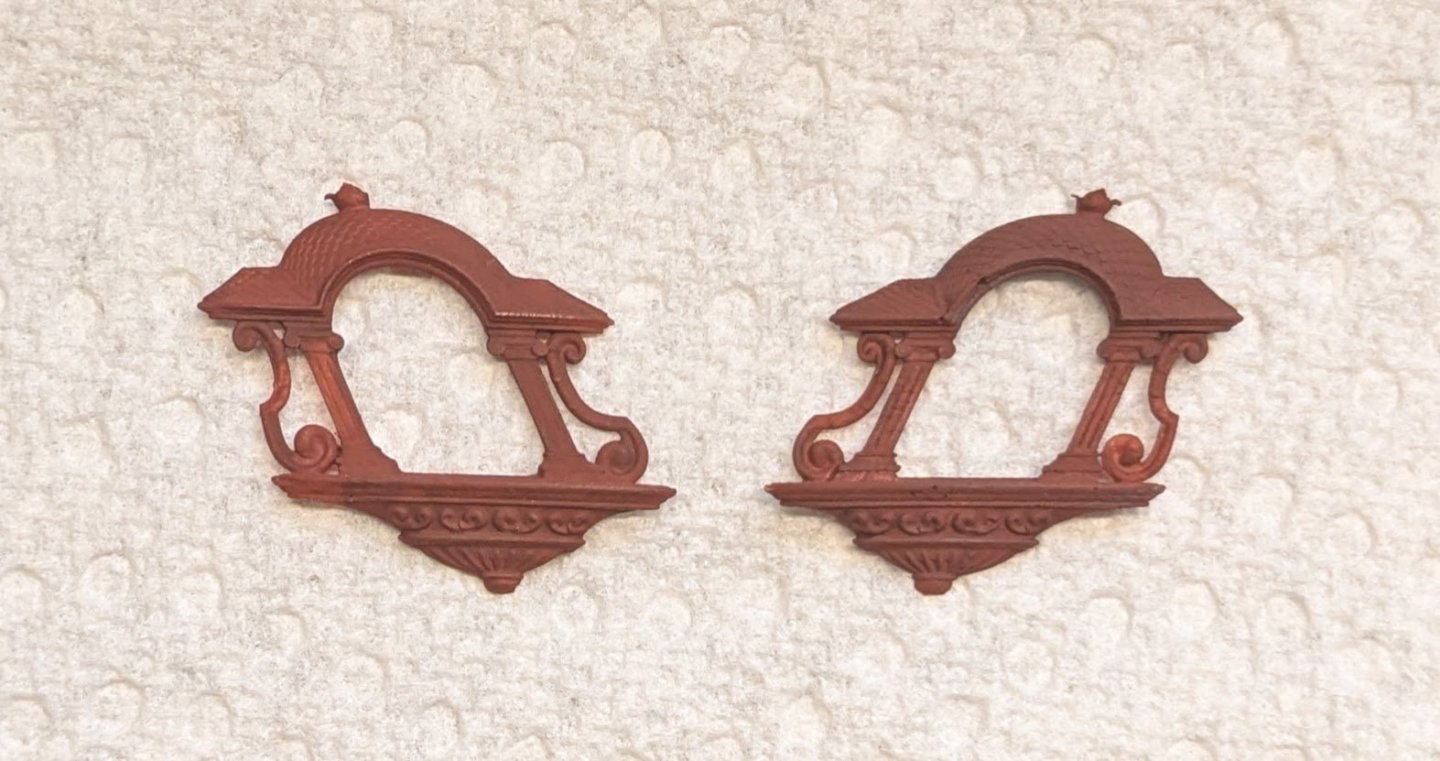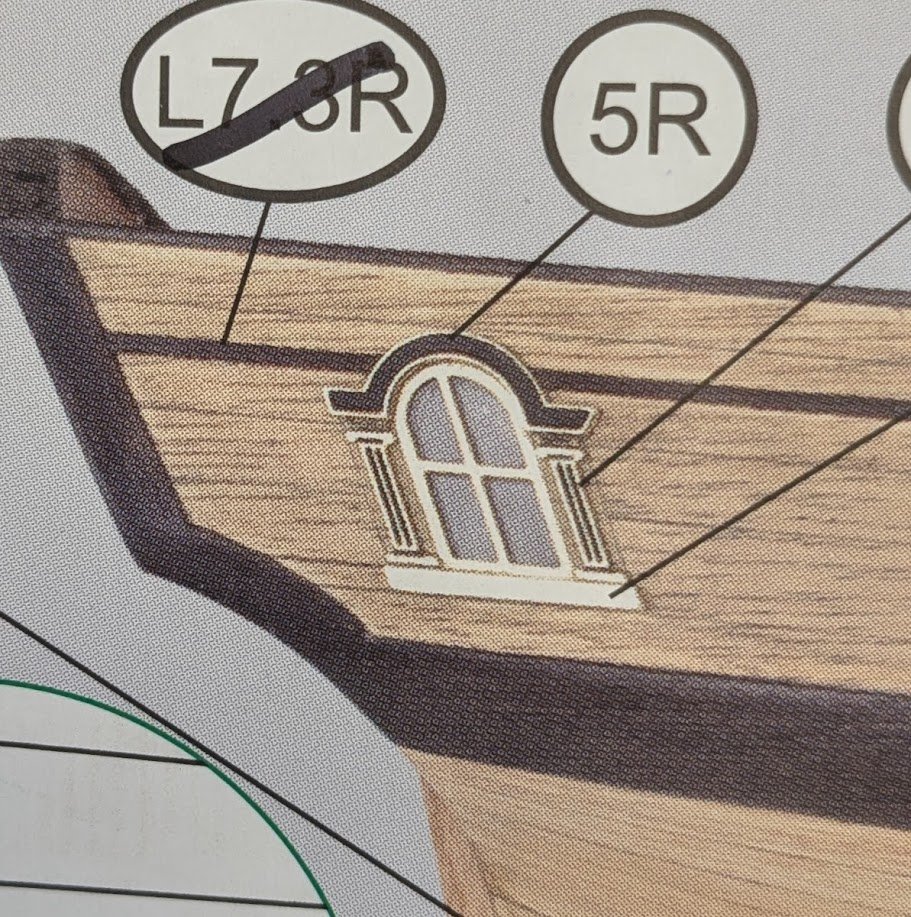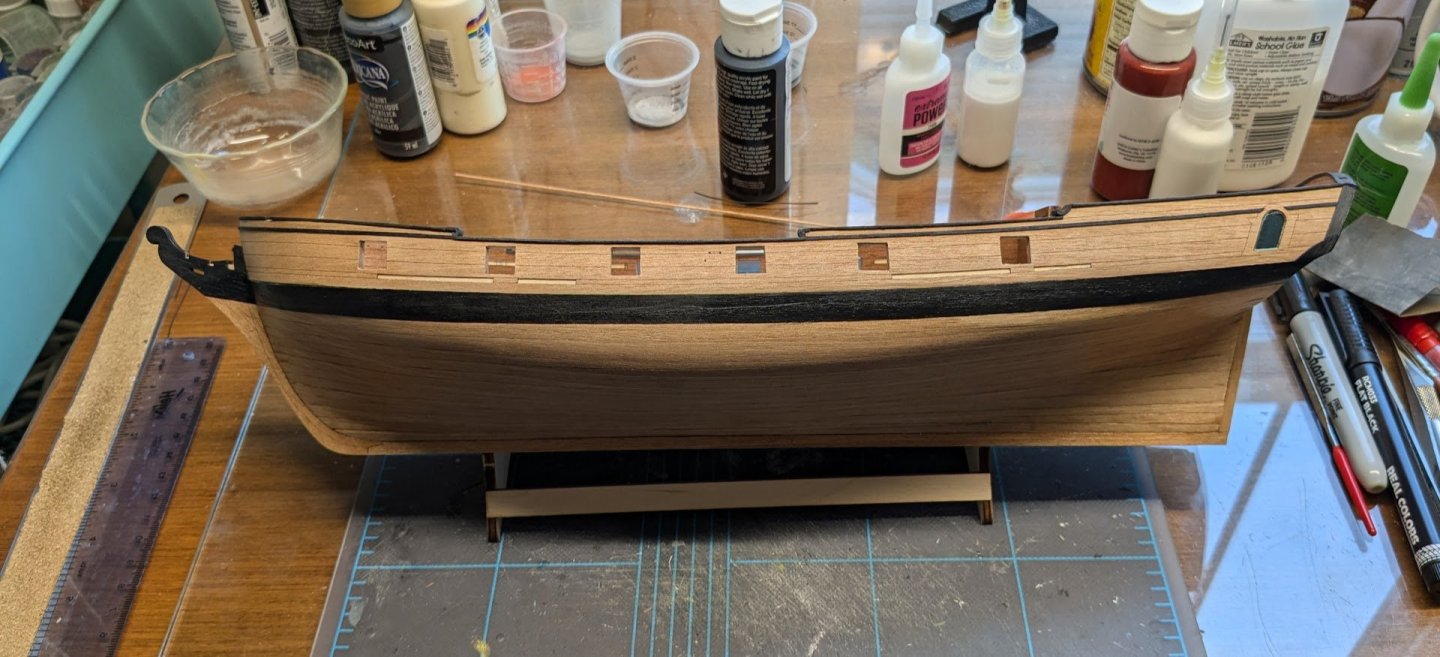-
Posts
10,459 -
Joined
-
Last visited
Content Type
Profiles
Forums
Gallery
Events
Everything posted by ccoyle
-
Welcome aboard!
-
Finished installing the eyebolts, cleats, and pin rails along the inner bulwarks. I'm skipping around a bit compared to the construction sequence provided in the instructions. The rudder was supposed to be the next assembly, but I have no intention of hanging that until I'm ready to mount the hull to its pedestal (which I don't have yet). Rudders just beg to be knocked loose if they're hung too early.
-
Pinterest users upload their own content and are responsible for abiding by copyright laws. Unfortunately, like many third-party sites, Pinterest will only go after IP infringement if the property's original owner files a take-down notice. I suspect that the world is awash in IP owners who are completely unaware that their content has been shared to Pinterest. If you share content from Pinterest to another site, such as MSW, you are responsible to make sure you have the legal right to do so. Bear in mind that Pinterest content consists mainly of images, and sharing an image constitutes sharing an entire creative work, which is not protected by fair use. For more, see https://policy.pinterest.com/en/copyright . Fair use is evaluated on a case-by-case basis, based on how much of the original work has been shared and for what purpose. MSW users are very unlikely to ever share so much of a book that it risks being an infringement, but pictures in a book are usually owned by somebody, often somebody other than the author, and the images themselves may be subject to restrictions on their reproduction and distribution. It's up to you to know before you share. Hint: If you want to discuss some element in a photo, use a snipping tool to only show the portion you wish to discuss rather than the entire image. The operative word in your last paragraph is "most." Yes, most copyrighted materials shared at MSW fall within the limits of fair use. But we also have a few members who don't give much thought to the matter and simply share material with reckless abandon. Most of those potential infringements will stay under the radar, and many IP owners do not have the resources to go after IP infringers. It's largely a matter of self-policing, and your MSW staff appreciates any and all efforts by members to play by the rules. Cheers!
-
My maternal grandmother was raised in Huron, South Dakota. I'm told that the local pronunciation rhymes with "urine." 🤔
-
Welcome aboard! This is one reason why I build card models. Cheers!
- 33 replies
-
- Model Shipways
- 18th Century Armed Longboat
-
(and 1 more)
Tagged with:
-
Determination and ingenuity are a modeler's best friends!
- 17 replies
-
- Swift
- Artesania Latina
-
(and 1 more)
Tagged with:
-
George, Not trying to shirk your question, but copyright law has been discussed elsewhere on the forum. You can find some of these discussions here. Also, since you are a resident of the UK, I cannot be too dogmatic about the rules, since some of the finer points of copyright law may differ on your side of the pond. You can likely find the answers you're looking for at https://www.gov.uk/copyright. Cheers!
-
Well, guess what? I found the brass name plate, so I won't have to make one from scratch. Whew!! BTW, in that same photo you can see one of the kit's PE eyebolts. I do not like them, because they are flat and therefore have a rectangular cross-section instead of round. The drill bits used to make pilot holes are of course round, so that's a problem. I prefer to make my own eyebolts. I also needed to make up a batch of ringbolts, which means I needed to whip up a batch of split rings. Tiny split rings. I went to Hobby Lobby last night and picked up a pair of jeweler's side cutters, which have narrower tips than the usual variety. I wrapped some fine wire around a beading needle (also from Hobby Lobby and a very handy tool), then cut it into rings with the side cutters. I made up 14 ringbolts in almost no time at all. That's all for now!
-
Well done, Jeff! I actually go the opposite route and purposely delaminate most rolled parts. For print-it-yourself kits, you can simply print the parts on 20# bond. For printed kits, which are my preference these days, you can remove most of the layers before rolling. No modeling until at least October, eh? Courage, man!
- 37 replies
-
- Baltimore
- heinkel models
-
(and 2 more)
Tagged with:
-
It doesn't. As far as I can find so far (unless I overlooked it somewhere), the regular kit had the name as part of the PE stern detailing, but the deluxe kit has nothing. I had already been thinking about how I'm going to tackle that issue. Looking ahead to the possibility of painting the name, I had already used Google Translate to make a copy of the name in Russian, with Cyrillic characters. But thanks for checking! 😉
-
Nope. Never used the stuff. Wouldn't know what to do with it. So anyways, back to the carvings. I found a color at Hobby Lobby that I think will do. This is the stern piece in a test fit -- the piece still needs work. But lo and behold! This is what the piece is supposed to look like: And these are the quarter badges pictured along with the version shown in the instructions: Now mind you, I think the pieces in the deluxe kit look better than those in the original kit -- but I'm not certain they're a more accurate representation of whatever was on the real Phoenix. It's possible that both are equally speculative. What I do think is certain is that the monogram E on the deluxe piece stands for Ekaterina, i.e., Catherine the Great, who reigned from 1762 to 1796. I don't intend to fret much about the accuracy of the pieces and will just forge ahead and use them.
-
I got the bits of molding along the outer bulwarks added. I then set about adding some clear semi-gloss polyacrylic to the hull, and things got a little dicey. Most of the first coat went nicely, but then the polyacrylic acted as a solvent on the paint on the wales, leaving several smudges. So first I had to clean that up. Then I sprayed the entire hull with matte clear spray to hopefully seal all the existing paint. While that was drying, I worked on painting some of the hull ornamentation. Moving on to the second coat of polyacrylic, the matte clear had done its job of sealing stuff, but somehow I had managed to get a couple of dabs of the ornaments colors on my freshly painted hull. 😡 So, I had to clean that off before proceeding. Finally got it all done. Now I'm not 100% happy with the tone of the 'orange ochre' paint I had on hand for painting the aft carvings. I made several attempts to mix up a batch -- each ended in abject failure. I will probably dash off to Hobby Lobby to see if I can't find something. BTW, while painting the various carvings, I noticed that they are completely different from the pieces used on the prototype model and shown on the box art. More on that later.
-
Beautiful! She needs a little fish oil rubbed about on her now. 😉
- 18 replies
-
- Ranger
- Vanguard Models
-
(and 1 more)
Tagged with:
-
From our guidelines: "All written work, drawings and photographs are considered copyrighted upon their creation and posting them on MSW does not constitute giving up ownership of the copyright. Again, no need for amateur or real lawyers - these are the rules here." You own whatever original work you share here, but MSW doesn't go after possible IP infringement on your behalf. If someone is using your work on YouTube, you can ask them to take it down. If it's you who is doing the sharing, simply ask for permission first. Most people will likely allow you.
-
Don't fret too much about it. Kit design was pretty archaic back in 1982. You got the first planking done, and that's the biggest challenge for most beginners.
- 17 replies
-
- Swift
- Artesania Latina
-
(and 1 more)
Tagged with:
About us
Modelshipworld - Advancing Ship Modeling through Research
SSL Secured
Your security is important for us so this Website is SSL-Secured
NRG Mailing Address
Nautical Research Guild
237 South Lincoln Street
Westmont IL, 60559-1917
Model Ship World ® and the MSW logo are Registered Trademarks, and belong to the Nautical Research Guild (United States Patent and Trademark Office: No. 6,929,264 & No. 6,929,274, registered Dec. 20, 2022)
Helpful Links
About the NRG
If you enjoy building ship models that are historically accurate as well as beautiful, then The Nautical Research Guild (NRG) is just right for you.
The Guild is a non-profit educational organization whose mission is to “Advance Ship Modeling Through Research”. We provide support to our members in their efforts to raise the quality of their model ships.
The Nautical Research Guild has published our world-renowned quarterly magazine, The Nautical Research Journal, since 1955. The pages of the Journal are full of articles by accomplished ship modelers who show you how they create those exquisite details on their models, and by maritime historians who show you the correct details to build. The Journal is available in both print and digital editions. Go to the NRG web site (www.thenrg.org) to download a complimentary digital copy of the Journal. The NRG also publishes plan sets, books and compilations of back issues of the Journal and the former Ships in Scale and Model Ship Builder magazines.









